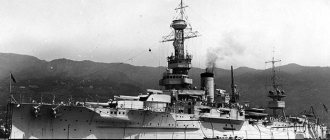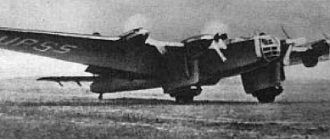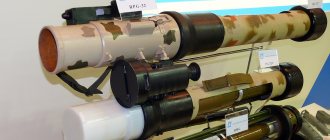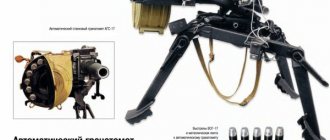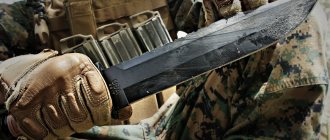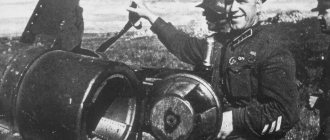Who has the bigger barrel, or the best battleships in history. First part.
So, it’s worth starting with a brief story about what a battleship of the latest generations is and what it comes with. And in general, how did the former “king of the seas” come to live like this?
Until 1906, in the field of heavy armored ships everything was calm, even, one might say, a bit boring. All the largest warships were built according to approximately the same template: about 15 thousand tons of displacement, 4 guns of 305 mm caliber (main caliber, main caliber), 12 152 mm guns (medium, also known as mine-resistant caliber, SK), number of smaller guns - according to taste, armor, which essentially reliably protects against everything except the main battery guns of other battleships, all this floats across the sea at 18 knots. This is what it looks like, a spherical battleship in a vacuum; with minor deviations, such ships formed the basis of the leading fleets.
Our battleship "Retvizan"
But in 1906 the world changed. And the admirals felt new trends not in the water, and especially not in the land and air, but after reading in the newspapers about the new ship of the British fleet - “Dreadnought”. It was a revolution. So successful that all subsequent ships of this class began to be called “dreadnoughts”.
The British slightly increased the displacement of the new ship, completely abandoned the SK guns, installed steam turbines and as many as 10 305 mm guns instead of steam engines. The result was a ship that was faster (speed of 20 knots) and more powerful than any other “capital” ship! There was only one thing left for the predecessors - to be scrapped together, in orderly ranks. Naturally, the whole world was gripped by dreadlocks. All countries, from Germany, the USA to Chile and Greece, wanted to scratch their egos by purchasing such a ship. A rapid race of dreadnoughts began, and after 7 years the founder himself already looked hopelessly outdated.
In 1909, the first “super-dreadnoughts” with 343 mm guns appeared, and the standard battleship of the First World War and the prototype of the next generation eventually became “Queen Elisabeth” (entered service in 1915): 8 guns with a diameter of 381 mm, the strongest armor, speed of 24- 25 knots, allowing her to outpace any other battleship of the time. A battleship, but not a battlecruiser (LK).
Here she is, the queen
Speaking about dreadnoughts, it is impossible not to mention this side branch of the development of 1st class artillery ships. To put it very roughly, any battleship is obtained using the formula “guns + armor + speed”. In battlecruisers, the emphasis is on the latter component, at the expense of sacrifices of one of the first two. The British gave up armor, the Germans - artillery. As Jutland showed, the latter approach turned out to be more viable.
The pinnacle of capital ships of the First World War was the battle cruiser “Hood” (British again, yeah), which became the largest ship of its time (45 thousand tons of displacement!) and was considered a LC only in name: neither the armor nor the guns were inferior to other battleships. And “Hood” was prohibitively expensive.
The race continued after the war. The Americans are already laying down 6 ships of the “South Dakota” type with 12(!) 406 mm cannons, the Japanese are also not lagging behind with their gigantomania, the British are again preparing a revolution with the G-3 project.
It was decided to put an artificial end to this madness, which turned out to be too burdensome for any economy, at the Washington Conference of 1922. The tonnages of the fleets are fixed in a certain ratio, the construction of battleships is temporarily frozen, new capital ships can only be built to replace old ones, at least 20 years old, the displacement and caliber of artillery are limited: 35 thousand tons and no more than 406 millimeters, respectively. And if the second condition did not pose any particular obstacles, then we still had to try harder to meet the tonnage of the Washington battleship.
After the agreement, Great Britain, as the most disarmed country, received the right to build two battleships, Nelson and Rodney. This was a lightweight version of the already mentioned G-3 project, up to 35 thousand tons, in which the speed characteristics were reduced. Therefore, these ships will also not be able to take part in our competition, since they still belong to the dreadnought generation. And the pinnacle of the development of battleships were the so-called high-speed battleships, which were supposed to be the G-3 ships, which were a symbiosis of a dreadnought and a battlecruiser. They were still ahead, after the “battleship vacation”.
So, we’ve sorted out the incredibly long backstory. Let's move on to the comparison. There will be three weight categories: up to 35 thousand tons of standard displacement, up to 45 thousand tons (“Washingtonians”), and, as is clear, everyone who is higher. Standard displacement - displacement without fuel, water, etc., but with a crew. I will discard most of the battleships, like the Brazilian “Minas Gerais” or our “Marat”, right away, since everything is clear with them.
So, the category “Up to 35 thousand tons”:
Meet the contestants!
- Elegant Frenchman “Dunkerque” with his brother “Strasbourg”! The first of the high-speed battleships, raider hunters!
- The spruced up “Andrea Doria”, a phoenix from sunny Italy!
- The stern German “Scharnhorst”, heir to the glorious traditions of the “High Sea Fleet”!
All other ships suffer too much in terms of speed characteristics. And the technologies used by the competitors have moved forward compared to the technologies of the “old guys.”
Let's start with number 2, as the most dubious participant in this competition. The Italians did not build new ships, primarily for financial reasons, but reconstructed existing ones. An elegant solution that has given old people a second wind, but is it enough to compete with the new generation?
So:
- Speed. Here the Italian is definitely an outsider. Modernization has made it possible to achieve peak speeds of about 27 knots, but its rivals do 30 knots without much effort.
- Protection. Another failure. The numbers look good, the belt is even thicker than the “Dunkerque”, but most of the Italian armor is of the old type, somewhat less effective than the new versions of the French and Germans. The German wins based on raw numbers, the Frenchman wins thanks to newfangled features, such as the bevel of the armored belt. The reinforced armored decks look good, on par, but nothing more. Pugliese's sophisticated anti-torpedo protection system, despite the loudly stated parameters, was relatively ineffective. But it is worth noting its depth: about 7 meters, very good.
- Artillery. 305 millimeters, reamed to 320, that's all you need to know. I’m not a big expert on guns, but I can definitely say about the problems with barrel survivability. That is, the speed of the projectile will decrease literally from shot to shot! The plus side is probably problems with accuracy, poor quality of ammunition (Italian disease) and terrible training of sailors. But we do not take the last point into account, since we are comparing the ships themselves, and not their crews.
Overall, I have to admit that “Andrea Doria” is dropping out of the competition. Then it gets more interesting, since we see a confrontation of concepts: a raider hunter versus this same raider!
In the photo "Conte di Cavour", almost a classmate of "Andrea Doria"
“Dunkerque” was born first. For financial reasons (again!), the French did not build a battleship with the maximum parameters allowed by the Washington agreements, limiting the standard displacement to 26 thousand tons. This resulted in the relative weakness of the project, but, nevertheless, the ship was innovative: 8 main guns of 330 mm caliber were placed in four-gun turrets for the first time in the world, for the first time the SK (16 barrels of 130 mm each) claimed to be universal. In fact, the insufficient elevation angle, clumsy armored turrets, coupled with a low rate of fire did not allow effective fire on aircraft.
The battleship's armor belt was only 225 millimeters thick, but the slope of 11.3 degrees gave an equivalent thickness of 283 mm of vertical armor. It's better, but still not enough for a fight with classmates. The bevels of the fourth armored deck, 50 millimeters thick, were not effective: they could even be hit by fragments of a pierced armor belt, not to mention cases when the projectile itself penetrated inside the ship.
The Frenchman received powerful horizontal armor from four armored decks, but they were located a little poorly: the top two were too thin (8 and 20 millimeters), which is why a battleship-caliber shell could penetrate them and not even be noticed. It must be said that the task of the first armored decks is to cock the shell fuse, ideally, to peel off the ARS (“Makarov” cap) from it. If this happened, then the shell exploded above the main armored deck (115 millimeters, 125 above the cellars), hitting it only with its fragments. Otherwise, the shell falls on it with all its power, piercing, and in its path only the 40 mm fourth armored deck remains, which is not a fact that will hold the fragments.
On the Strasbourg, the side armor was strengthened, bringing it to 283 millimeters (340 vertical equivalent). This is much more serious, allowing the second ship in the series to look much more balanced.
The PTZ of the French ships was deep (7 meters) and reliable (resisted the explosion of a charge of 300 kg in TNT equivalent). It is also worth noting excellent seaworthiness and autonomy. “Dunkerque” was created as a hunter of “pocket battleships”, and it fits these requirements perfectly, but it will be much more difficult for it to cope with “Scharnhorst”.
The German is the exact opposite of the French ship. If it is booked according to the American “all or nothing” scheme, then Hitler’s battleship was created in accordance with the ideology of the Kaiser’s fleet: close combat “wall to wall”. The rather narrow side belt has a thickness of 350 millimeters; it is adjacent to the bevel of the armored deck, 105-110 millimeters thick, at an angle of 65 degrees. At real combat distances, even the Japanese giant “Yamato” will not be able to hit such a citadel!
With horizontal armor, according to the numbers, everything is fine, 50 millimeters on the top, unarmored second (about 12 millimeters of steel), 80-95 millimeters on the main armor. Here the designers re-armored the first deck: 40 millimeters would be enough, it would be better to strengthen the third. Due to the large thickness of the first deck, a projectile flying at an angle could be turned normally. As a result, we have (based on calculations using the M79ARСLC shell from the German 381 mm cannon that was installed on the Bismarck) an anomalous penetration area at a distance of about 14 kilometers. It is also worth noting that the inter-deck volume was too large, given over to be torn apart, and the protrusion of the armored deck above the boilers. This glacis, only 80 millimeters thick, was the Achilles heel of the German ships. She destroyed Scharnhorst in 1943. Weak spots attract projectiles like a magnet, everyone knows this. In that battle near the North Cape, Scharnhorst seemed to have broken away from the squadron that intercepted it. The light ships of the British could not maintain high speed during the storm; the battleship Duke of York lagged behind the faster German. But one of its shells hit the 45 mm casemate, hit the armored deck right next to the glacis above the boilers, reflected off it, pierced a vertical ledge and flew into the boiler room, where it exploded. The speed immediately dropped and the pursuers overtook the raider.
It is worth noting the weak PTZ of German battleships, only 4.5 meters maximum depth. High-speed contours make their impact known.
Now about the artillery. The Germans used 283 mm guns, already proven, an ideal caliber for a convoy fighter. But their SC was not universal, and during air raids it could only smoke bamboo. But let's return to the main tool in dismantling battleships, main guns. “Scharnhorst” will be able to hit the French opponent from 16.5 (“Dunkerque”) and 13 (“Strasbourg”) kilometers. The bevels of French armored decks will yield at distances of 14 and 11 kilometers, respectively.
French very good 330 graph paper will sew a “Scharnhorst” belt already from 20 kilometers. But further on there are thick bevels of the deck, which shells are literally incapable of penetrating, except, of course, for the vulnerable protrusion above the boilers. A difficult choice, to be honest. At close range, for example in conditions of limited visibility of the North Sea, the German ship will win, but in the clear Atlantic the French will have time to riddled the Scharnhorst from a safe distance. In general, “Dunkerque” looks weaker than its brother and German ships, primarily due to its rather thin armor belt. Therefore, I will give the victory to “Scharnhorst”, despite the fact that “Strasbourg” looks more balanced than the Germans and is able to compete with some ships of the next weight category. With that, I bow to the second part, I hope you found it interesting)
"Iowa" fires a broadside. It inspires, you will agree.

